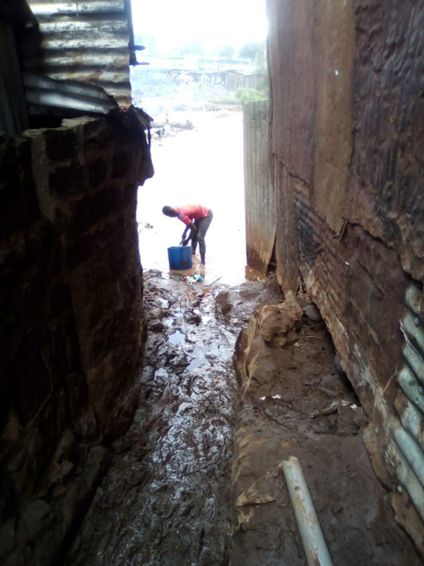by Tharien van Eck, AWC Antwerp and Health Team Co-Chair
Climate change! No! Yes! Is it really happening, and what is the impact on health?
The scientists say yes, the conspiracy theorists say no. But we can see the changes around us, and we are experiencing it. And it is starting to have a defined impact on human health.
 The recent heavy rains in Kenya revealed the devastating impact of global warming, aggravated by poor urban planning. It has long been said that there are significant gaps in the planning of the slums around Nairobi, including the Mathare slum where Safe Spaces / Awesome Blossoms is functioning. Kenya often receives very heavy rain during the rainy season, but the scale earlier in 2024 was unprecedented, with more than half a month’s rain falling in just two days.
The recent heavy rains in Kenya revealed the devastating impact of global warming, aggravated by poor urban planning. It has long been said that there are significant gaps in the planning of the slums around Nairobi, including the Mathare slum where Safe Spaces / Awesome Blossoms is functioning. Kenya often receives very heavy rain during the rainy season, but the scale earlier in 2024 was unprecedented, with more than half a month’s rain falling in just two days.
Safe Spaces was impacted by the flooding, resulting in the houses of a number of volunteers being flooded. The vegetable crop survived the flooding thanks to the fact that it was raised from the ground. Unfortunately, not everyone could escape becoming infected with Salmonella typhi.
Typhoid fever is endemic in Kenya, with more than 126,000 cases per year. Kenya’s limited WASH infrastructure heightens the risk of typhoid infections, particularly for young children. Half of Kenya’s typhoid burden is borne by children under 15 years of age.
Prevalence of typhoid fever
It is estimated that approximately 9 million people became ill with typhoid fever in 2019, and that about 110,000 people die from it every year, a number that is most probably inaccurate, as treatment and testing are questionable in many geographic areas. For the foreseeable future, the disease will remain a public health issue in many developing countries, including the WHO African, Eastern Mediterranean, South-East Asia and Western Pacific Regions.
What is typhoid fever?
It is a potentially life-threatening infection caused by Salmonella typhi. It typically spreads through contaminated food and/or water. Upon ingestion of contaminated food and water, the bacteria multiply and spread into the bloodstream. Infected individuals will present with diarrhea, abdominal pain, fever, headache and fatigue Some patients may have a rash. Infected individuals can quickly become dehydrated if not treated properly, and severe cases may lead to death.
The treatment includes hydration as well as antibiotics. Antimicrobial resistance is making treatment more challenging; often more expensive antibiotics have to be used and for a longer duration of time. Infected individuals may become asymptomatic, but could still be carrying and shedding the bacteria in their feces. Adhering to the treatment protocol prescribed by your treating physician is important, as well as washing hands with soap and water after using the bathroom and before preparing food.
How can it be prevented?
There are two vaccines available to prevent typhoid fever, an inactivated vaccine and a live, attenuated vaccine. The inactivated typhoid vaccine is administered as an injection, given at 2 years of age and older. This vaccine does not give lifelong immunity and has to be repeated every two years if you are exposed to risk.
The live typhoid vaccine is administered orally, in the age group 6 years and older. The dosage is one capsule per day for four days, with the last dose one week before travel. A booster vaccine is needed every 5 years for people who remain at risk.
Being exposed to Salmonella typhi while travelling is a risk that you always have to consider, even when travelling to a seemingly lower-risk country. Do not underestimate the disease! Be prepared, and wash your hands. Graham and I travelled to South Africa a few years ago, and I developed typhoid fever, very unexpectedly. I was lucky that I could receive home nursing, but we had to delay our flight twice travelling back to Belgium. Carry that bottle of water with you even if it is heavy and cumbersome, avoid street food, and get the vaccination!
Photo credit: Peninah Nthenya Musyimi
Sources:
Typhoid Fact Sheet | World Health Organization
